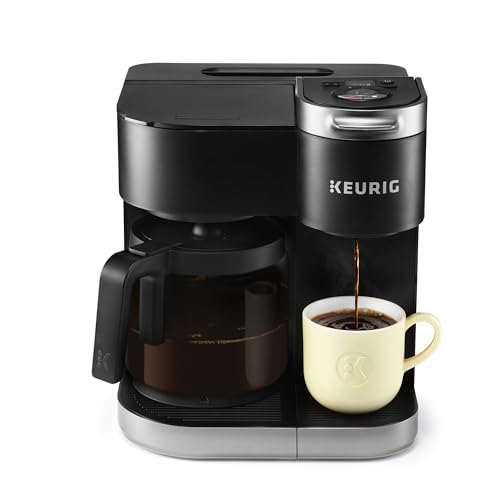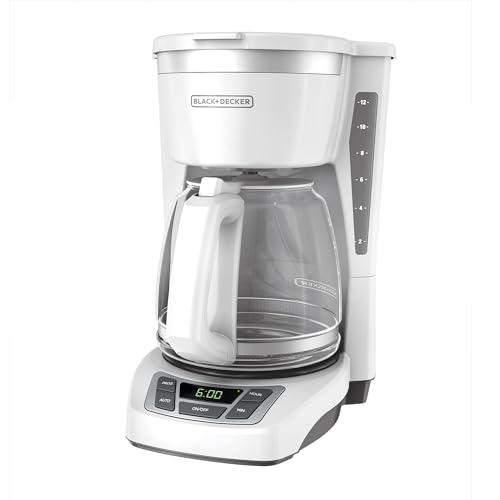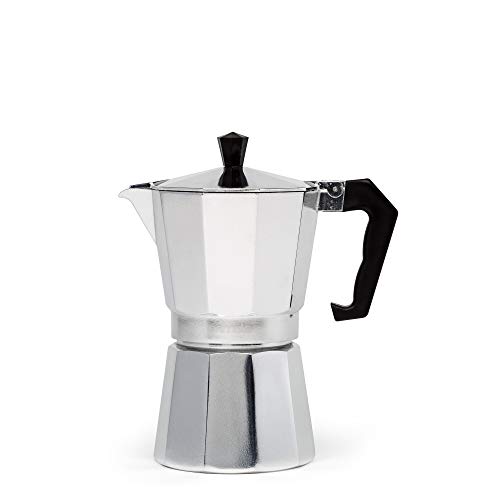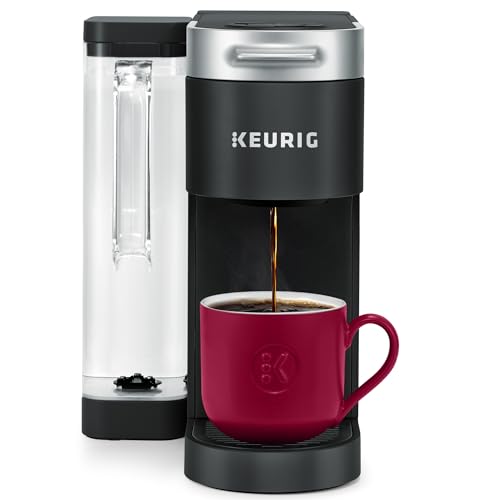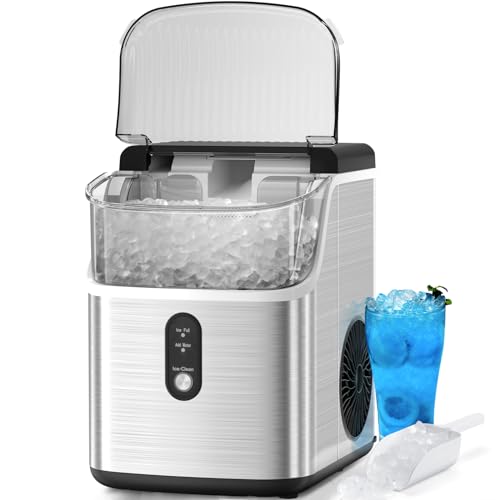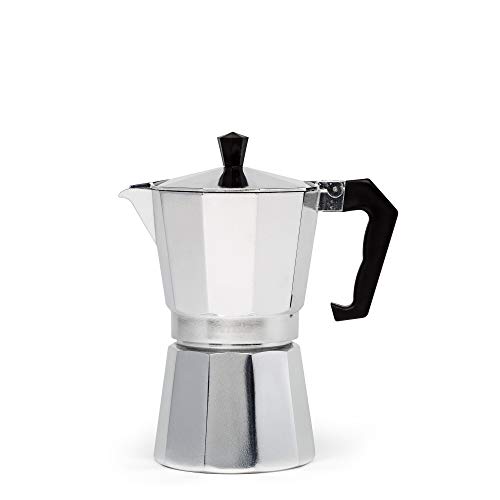- How To Tap A Keg With A Keg Pump
- Tips for tapping a keg with a pump
- The benefits of using a keg pump over other methods
- Troubleshooting tips if your keg pump isn’t working properly
- How To Tap A Keg In A Kegerator?
- What you need to know before you start?
- FAQs
- What is a keg pump and what does it do?
- How do I use a keg pump?
- When NOT to use a keg pump?
- What is the difference between a keg and a cask?
- How long does beer last in a keg?
- How long should a keg sit before tapping?
- How do you tap a keg without making a mess?
- Is tapping a keg hard?
- Can you tap a keg twice?
- What PSI should my kegerator be set at?
- How do you get beer out of a keg without CO2?
- Why is my keg all foam?
- Conclusion
Step By Step: How to Tap a Keg?
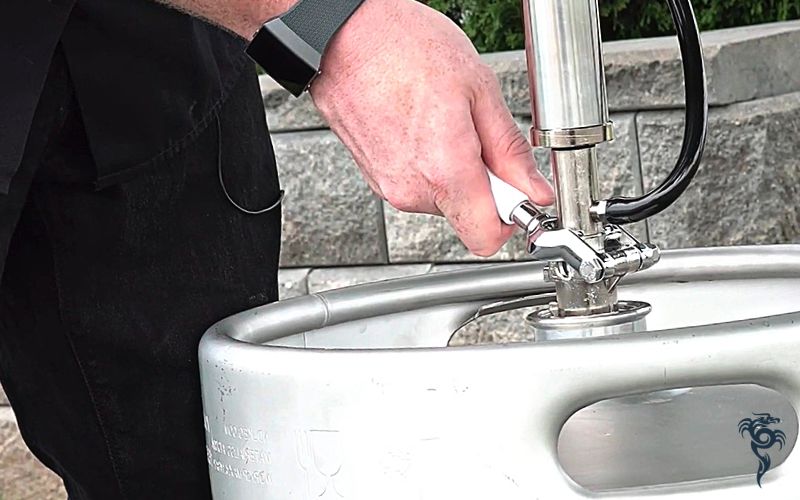
Learning How to Tap a Keg is an important skill for any beer lover. It can be a little tricky at first, but with a few simple steps, you’ll be able to do it like a pro. Nothing beats a cold one straight from the tap when it comes to beer. This includes a keg, a CO2 tank and regulator, tubing, and a faucet assembly. Next, sanitize your equipment using sanitizer or hot water and soap. Once everything is clean, connect the CO2 tank to the keg and set the regulator to 10-14 PSI. Purge any air from the keg by depressing the release valve on top of the keg (this will also dispense your first pint). Finally, connect the tubing from the faucet assembly to the keg and open up the faucet. Voila! You’re now ready to enjoy a cold one from your very own home tap system. In this blog post, we’ll walk you through the process of tapping a keg so you can enjoy your favorite brews in no time. Keep reading for more information!
How To Tap A Keg With A Keg Pump
Get a “D” tap for a domestic beer keg
The “D” tap is used in America and many countries around the world to connect kegs with beer lines. It’s important that you have a matching set-up, so make sure your grooves line up when installing both pieces of equipment. This can be checked by looking for grooves in both pieces and lining them up together before tightening down on each side of where they meet at the bottom part; if there aren’t any then try another kind or find someone who does sell one other than what’s standard here! Other possible systems include:
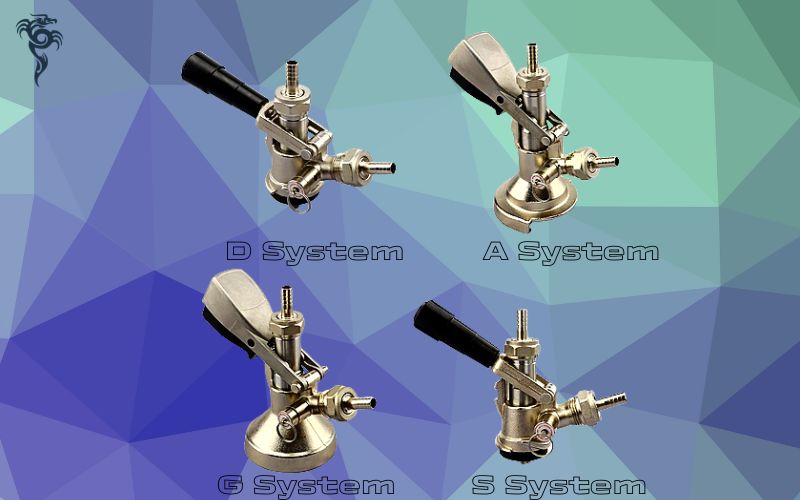
European ‘S’ System ( similar sounding but different ), Grundy G-system.
The American keg is a “D” tap, but there are other systems that you can use for tapping your beer. For example, the European S-system and Grundy G method both have their own set of taps with matching holes in them, so they reach what’s on top–but remember this will depend on where exactly inside each type(or brand)of the container it needs to be fitted!
Chill the keg for 1 hour before tapping it
Ice is the perfect way to keep your beer cold and fresh. Fill up a large bucket with cubes, then place it inside your keg so that it’s surrounded on all sides by ice cycles – this will ensure minimal warmth during storage and prevent foam from forming when drinks are being served out! It would be best to put your keg in a fridge for about an hour, so the beer inside is nice and cold. This will help to prevent foam from forming when you open the tap, which can make pouring difficult.
When it comes to kegs, the colder they are, the better. Start chilling them as soon as you bring them home, no matter when your party is! Some beer experts swear by cooling their tap, too–this isn’t required, but if you want extra sure that all of yours will stay cold, put it on ice for about 1 hour before serving (or bottling). However, cooling at too low a temperature causes beer to become cold shock and results in over-carbonation, so make SURE not to follow directions below freezing!
Lift The Handle Of The Tap
Tapping a keg can be an exciting and rewarding experience, but there are some simple steps to take before you start so your party doesn’t become chaotic. First, make sure the tap handle is elevated above ground level by pulling it up or pushing down on top of one leg while holding onto another corner with all forces fingers tightly intertwined around both pieces together until they separate easily without creating any space between them at either end; then just release slightly! This will prevent trigger Happy taps from flooding out beer everywhere!
To avoid spraying beer in your face, disengage the tap before tapping on it. It’s a small step, but many people forget—which can lead to a huge mess! Before you start tapping away at that keg of yours, though, make sure there is no low Gravity flow by grabbing hold with both hands and raising on behalf so all excess liquids come out through one hole while leaving enough space underneath which may be needed later if additional taps are attached or removed during party hours.
Line up the tap with the mouth of the keg
First, stick the tap over your keg and ensure it’s secure. If there’s a plastic or cardboard cover on top of this piece, then take it off before inserting anything else into its mouth! If you have a keg with a rubber top, use the point of the tap to puncture through. If your keg doesn’t have a rubber top, find the seam that circles the edge of the metal lid and use the point of the tap to pierce through there.
Turn the tap clockwise
To make sure you get the perfect fit, start by locking your tap onto the keg. Push down on it lightly and then turn clockwise about 90 degrees until its locked in place! This is key because if not done correctly, beer will start spilling out from all sides instead of just the tap.
Now it’s time to start pouring!
If you followed all the steps correctly, you should now be ready to pour some cold beer! Just open the valve and watch the liquid flow. If foam starts forming, wait for a few.
Push down on the handle to open the valve
Now that your tap is in place, it’s time to start pouring! But before you do, make sure you open the valve by pushing it down on the handle. If you don’t, beer will spray everywhere when you start trying to pour. Start with small bursts until liquid starts coming out of the spout in an even stream, then increase flow as needed for glasses or cups being filled up all at once.
Pull the handle out and down
To properly tap a keg, first put the handle in the “on” position and push down until you feel an clicks indicating that it has been fully seated. Next, grab both sides with one hand while still holding onto what is above them using two fingers from another so there’s no fear of dropping anything during this process which can cause injury! Once everything feels secure enough move slowly towards your desired beverage source till pressure builds up inside (usually takes about 10 seconds) then release all cannabinoids at once by putting the handle back into its original “off” position while continuing to hold down on top with all other fingers until liquid has stopped coming out from spout.
Pour your first beer
To avoid adding any more foam, keep the tap nozzle lowered as you pour your first brew. The beer will be foamy and may need some topping off with spare bottles or cans; just make sure not to pump too much air into it!
You may have heard that you need to pump the tap before pouring your first beer, but it’s not true. Pumping too much can lead just make more foam and waste good drinking water!
Pump the tap when the flow is slow
When pouring beer, keep an eye on how strong the stream from your nozzle is. If it turns into a trickle, grab that tap and pump 5-6 times for higher pressure!
Pouring beer through a strong stream is an art. You want to make sure that your running it at just the right strength, so you don’t end up with too many climes or gushers, but also constantly check how much pressure there’s been in terms of flow from start to finish because this will determine if more pumps needed after each pour.
It takes practice for anyone to look good when they’re doing something new, like drinking craft beers on tap!
Lift the handle and turn the tap to untap the keg
Once you’re all done pourings for the night, it’s time to untap your keg. This is important because if you leave it tapped, beer will go flat and start to taste bad.
To do this, simply lift up on the handle and turn the tap counter-clockwise until it’s loose. Then pull the tap out and cover the keg with its lid.
You’re all done!
Now you know how to tap a keg like a pro! Just remember to keep your beer cold, pour slowly at first to avoid foam, and pump the tap when the flow starts to slow down. With practice, you’ll be pouring perfect pints in no time.

Tips for tapping a keg with a pump
- Make sure the keg is properly cooled before tapping. This will help reduce foam.
- Pump the tap a few times before pouring your first beer to get the flow started.
- Pour slowly at first to avoid foam, and increase the flow as needed.
- When the flow starts to slow down, pump the tap a few times to maintain pressure.
- Untap the keg when you’re done pouring, and cover it with its lid.
The benefits of using a keg pump over other methods
Keg pumps are a great way to tap a keg, because they:
- Are easy to use
- Do not require CO2 cartridges or other equipment
- Keep the beer from going flat
- Help maintain pressure and prevent foam
- Make it easy to untap the keg when you’re done pouring
Troubleshooting tips if your keg pump isn’t working properly
If your keg pump isn’t working properly, there are a few things you can try:
- Make sure the tap is tight and not leaking.
- Check that the O-ring is in place and not damaged.
- Make sure the washer is in place and not damaged.
- Clean the tap with warm soapy water.
- Replace any damaged parts.
If your keg pump still isn’t working after trying these troubleshooting tips, contact the manufacturer for assistance.
How To Tap A Keg In A Kegerator?
If you have a kegerator, tapping a keg is even easier! Just follow these simple steps, and you’ll be pouring cold, delicious beer in no time.
Step 1: Clean your keg coupler
The first step is to clean your keg coupler. This part attaches to the tap and allows the beer to flow out of the keg. You’ll want to ensure it’s free of dirt, grime, and any other debris that could contaminate your beer.
Step 2: Attach the coupler to the keg
Next, attach the coupler to the keg. Make sure it’s snug and secure, so there’s no risk of it coming loose while tapping the keg.
Step 3: Insert the tap into the coupler
Now it’s time to insert the tap into the coupler. This can be a little tricky, so take your time and make sure it’s properly seated. You should hear a click when it’s in place.
Step 4: Open the valve
Once the tap is in place, open the valve to allow the beer to flow out of the keg. Start with a small amount to avoid foam, then increase the flow as needed.
Step 5: Pour your beer
Now it’s time to enjoy your cold, delicious beer! Pour slowly at first to avoid foam, then adjust the flow as needed. Enjoy!
When you’re finished, close the valve and remove the tap from the coupler. Be sure to clean everything thoroughly so it’s ready for next time.
Kegging your own beer is a great way to save money and have fresh, delicious beer on tap whenever you want. With a little practice, you’ll be a kegging pro in no time!
- Make sure your keg is cold. This is important because if the keg is too warm, the beer will be foamy.
- Attach the CO2 tank to your kegerator.
- Turn on the CO2 and set it to about 10-12 psi.
- Open the door to your kegerator and insert the keg coupler into the valve on the keg.
- Slowly turn the handle on the coupler clockwise until it’s tight. Be careful not to over-tighten it or you may damage the valve.
- Now open the valve on the coupler and let some beer flow out until there’s no more foam.
- Close the valve and you’re ready to pour!
What you need to know before you start?
Tapping a keg is easy, but there are a few things you should know before you get started. First, make sure your keg is cold. If it’s too warm, the beer will be foamy. Second, attach the CO2 tank to your kegerator and set it to about 10-12 psi. This will help prevent foam when you’re tapping the keg. Finally, open the door to your kegerator and insert the keg coupler into the valve on the keg. Slowly turn the handle on the coupler clockwise until it’s tight. Be careful not to over-tighten it or you may damage the valve. Now open the valve on the coupler and let some beer flow out until there’s no more foam. Close the valve and you’re ready to pour!
Just remember to keep your keg cold and don’t over-carbonate it or you’ll end up with foamy beer. With a little practice, you’ll be pouring perfect pints every time.
Now, you’re reading “How to Tap a Keg?” of Phoenix Landing Bar. Keep reading!
FAQs
What is a keg pump and what does it do?
A keg pump, or party pump, is a device used to draw beer from a keg. The keg pump pressurizes the keg, allowing beer to flow out of the keg’s tap. Keg pumps are often used at parties or other large gatherings where serving beer from a regular tap would be impractical. Besides being easy to use, keg pumps are also relatively inexpensive, making them a popular choice for those looking to serve beer on a budget.
How do I use a keg pump?
To use a keg pump, first, ensure that the pump is compatible with the type of keg you will be using. Different kinds of kegs require different types of pumps. Once you have determined that the pump will fit your keg, place the pump over the keg’s tapping valve and secure it in place. If the pump has a lever, pump the lever up and down to pressurize the keg and start the beer flowing. If the pump does not have a lever, simply place it over the valve and wait for the beer to begin flowing. Once the beer starts flowing, hold the pump in place and enjoy your brew!
Now, you’re reading “How to Tap a Keg?” of Phoenix Landing Bar. Keep reading!
When NOT to use a keg pump?
If you’re not planning on drinking all the beer in one sitting, it’s best not to use a keg pump. Once the keg is tapped, the beer will start to go flat.
It’s also best not to use a keg pump if you don’t have enough space to store the keg. Be sure to have a fridge or cooler that can accommodate the size of your keg.
Keg pumps are a great way to tap a keg, but they’re not right for every situation. Be sure to consider all your options before tapping your next keg!
In addition, while most people use keg pumps to tap their kegs, there are other ways to do it. You can also use a CO2 cartridge or an air compressor.
If you’re not sure which method is right for you, check out our guide on how to tap a keg.
What is the difference between a keg and a cask?
A cask is a container used to store and serve beer. Casks are often made of wood, metal, or plastic, and they have a tap on one end for dispensing the beer. A keg, on the other hand, is a container used to store and transport beer. Kegs are usually made of metal or plastic, and they have a valve on one end that is used to dispense the beer. Kegs are often used in commercial settings, such as bars and restaurants, while casks are more commonly used in home brewing.
How do I store a keg?
Kegs should be stored in a cool, dark place. Ideally, they should be stored at a temperature of 55 degrees Fahrenheit or lower. If you don’t have a dedicated storage area for your kegs, you can store them in your fridge or cooler. Be sure to remove any food items from the fridge or cooler before storing the kegs, as the beer can pick up unwanted flavours from the food.
When storing kegs, it’s important to keep them away from direct sunlight and heat sources. Sunlight and heat can cause the beer to go bad, so be sure to store your kegs in a dark, cool place.
How long does beer last in a keg?
Beer can last for months in a keg, but it will start to go bad after a while. The exact amount of time that beer will last in a keg depends on a number of factors, including the type of beer, the storage conditions, and how often the keg is tapped. In general, lighter beers will last longer than darker beers. Beers stored in cool, dark conditions will last longer than those stored in warm, light conditions. And finally, beers that are not tapped frequently will last longer than those that are tapped more often. With proper care and storage, most beers will last for several months in a keg.
How do I clean a keg?
Cleaning a keg is relatively simple, but it’s important to do it regularly to prevent the build-up of bacteria and yeast. To clean a keg, you’ll need to remove the tap and plug the holes with plugs or corks. Next, fill the keg with a cleaning solution (such as oxyclean or sanitizing solution) and let it soak for 24 hours. After soaking, empty the keg and rinse it out with water. Be sure to dry the keg thoroughly before storing it or tapping it again.
It’s also important to clean your taps on a regular basis. This can be done by disassembling the taps and soaking them in a cleaning solution. Be sure to rinse the taps thoroughly before reassembling them.
By following these simple tips, you can keep your keg and taps clean and prevent the build-up of bacteria and yeast.
How long should a keg sit before tapping?
Ideally, a keg should sit for 24-48 hours after being filled with beer. This allows the beer to settle and carbonate properly. If you tap the keg too soon, the beer will be foamy and flat.
If you’re in a hurry, you can speed up the process by chilling the keg in a fridge or cooler. This will help the beer carbonate faster. Just be sure to remove the keg from the fridge or cooler 24 hours before tapping it.
How do you tap a keg without making a mess?
The best way to tap a keg without making a mess is to use a keg-tapping kit. This kit includes a CO2 regulator, a beer line, and a faucet. The CO2 regulator is used to control the flow of carbon dioxide into the keg. The beer line is used to connect the keg to the faucet. And finally, the faucet is used to dispense the beer.
When using a keg tapping kit, it’s important to follow the instructions carefully. Be sure to attach the CO2 regulator to the gas inlet on the keg. Next, attach the beer line to the liquid outlet on the keg. Finally, attach the faucet.
Is tapping a keg hard?
Tapping a keg is relatively easy, but there are a few things you need to know before you get started. First, you’ll need to chill the keg in a fridge or cooler. This will help the beer carbonate faster. Just be sure to remove the keg from the fridge or cooler 24 hours before tapping it.
Next, you’ll need to assemble your keg tapping kit. This kit includes a CO2 regulator, a beer line, and a faucet. The CO2 regulator is used to control the flow of carbon dioxide into the keg. The beer line is used to connect the keg to the faucet. And finally, the faucet is used to dispense the beer.
When using a keg tapping kit, it’s important to follow the instructions carefully. Be sure to attach the CO2 regulator to the gas inlet on the keg. Next, attach the beer line to the liquid outlet on the keg. Finally, attach the faucet to the beer line.
Once you’ve assembled your keg tapping kit, you’re ready to tap the keg! Simply open the CO2 valve and slowly dispense the beer into glasses or cups. Enjoy!
As you can see, tapping a keg is relatively easy. Just be sure to chill the keg before tapping it and assemble your keg tapping kit according to the instructions. With a little practice, you’ll be able to tap a keg like a pro!
Can you tap a keg twice?
Yes, you can tap a keg multiple times. However, it’s important to clean the keg and taps between each use. This will prevent the build-up of bacteria and yeast. To clean a keg, you’ll need to remove the tap and plug the holes with plugs or corks. Next, fill the keg with a cleaning solution (such as oxyclean or sanitizing solution) and let it soak for 24 hours. After soaking, empty the keg and rinse it out with water. Be sure to dry the keg thoroughly before storing it or tapping it again.
It’s also important to clean your taps on a regular basis. This can be done by disassembling the taps and soaking them in a cleaning solution. Be sure to rinse the taps thoroughly before reassembling them.
By following these simple tips, you can keep your keg and taps clean and prevent the build-up of bacteria and yeast.
What PSI should my kegerator be set at?
The correct PSI for your kegerator will depend on a few factors, such as the type of beer being dispensed and the temperature of your kegerator. Generally speaking, most beers should be Dispensed at 10-12 PSI. If you’re dispensing beer at a higher temperature (such as 50 degrees Fahrenheit), you may need to increase the PSI to 15-18.
It’s important to experiment and find the ideal PSI for your kegerator. Start by setting the PSI at 10 and gradually increasing it until you find the perfect setting. Be sure to write down the PSI so you can remember it for future use.
How do you get beer out of a keg without CO2?
There are a few ways to get beer out of a keg without CO2. One way is to use a hand pump. This pump attaches to the keg and uses air pressure to push the beer out of the keg. Another way is to gravity-feed the beer out of the keg. This can be done by placing the keg on a raised platform (such as a table or counter) and opening the tap. The gravity will pull the beer out of the keg and into your glass or cup.
In both methods, it’s important to keep the keg cold, so the beer doesn’t go flat.
With either method, it’s important to keep the keg cold, so the beer doesn’t go flat. If you’re using a hand pump, be sure to keep it refrigerated between uses. And if you’re gravity-feeding the beer out of the keg, be sure to keep the keg on a bed of ice. By following these simple tips, you can enjoy a fresh, cold beer from your keg without CO2.
Why is my keg all foam?
There are a few reasons why your keg might be all foam. One reason is that the keg was not properly chilled before tapping. Be sure to chill the keg for 24 hours in a refrigerator or cooler before tapping it. Another reason might be that the tap is not placed correctly on the keg. Be sure to follow the instructions carefully when attaching the tap to the keg. Finally, if you’re using a hand pump, be sure to check that the pressure is set correctly. Too much pressure can cause the beer to come out as a foam.
Conclusion
In short, How To Tap A Keg is easy once you have the necessary supplies and know-how. Be sure to chill the keg before tapping it, assemble your keg tapping kit according to the instructions, and find the perfect PSI for your kegerator. With a little practice, you’ll be able to tap a keg like a pro!
Remember to clean your keg and taps on a regular basis to prevent the build-up of bacteria and yeast. And when in doubt, consult a professional!
